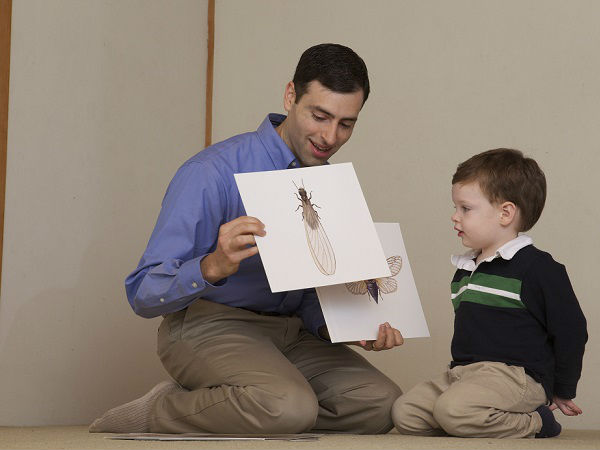Do you want your little baby to start developing self-control and being aggressive? Do not miss the following tips to teach good children.
Although sometimes children do things that seem very aggressive (such as holding mother's hair), they are still unable to think and intentionally act maliciously. So, if a 6-month-old baby bites on your arm or a 12-month-old baby hits her hard, it's not because she's trying to "mum". Babies cannot control their emotions or use words to express their thoughts. Over time, children will learn to distinguish right from left if you behave clearly and consistently with rules. However, it is never too early to think about how to teach good children that you need to develop.

Accepting angry emotions and aggressive behaviors will help you wisely choose how to teach good children
Starting about 18 months, toddlers will know they are separate from their parents and eager to act as independently as possible. But the children are limited in self-control and do not know how to wait, share and follow the order. And while learning more words every day, babies are still dependent on actions to convey what they want. When angry , depressed, tired or too overwhelmed, your child can hit, shove, hit / pat, pounce / jerk, kick / kick or bite to let mom know I'm upset or I'm tired Okay or I can stand it all and need a rest.
Consider specific family situations
No two children or two families are alike. Considering the following questions can help you apply the right parenting tips to your baby and family.
- What kind of situations often cause your child to act aggressively? Why do you think so?
- When your baby behaves like he wants to fight, how do you usually react? Do you think this response helped your child? Why?
What to expect from babies from birth to 3 years old?
The ways below can help your baby begin to develop self-control and be less dependent on aggressive behaviors when he wants to express his needs and feelings.
With babies from birth to 12 months
Set limits in a clear and firm (but not angry) tone of voice. Then turn your baby's attention. If your baby pulls the mother's hair, you should show a toy. If your child plays with the remote control, give him a toy with a button.

Teaching good children: The art of saying "no" to children "No" is a short, concise word, but not all parents know how to apply it properly, especially to deny some unreasonable requests from the child's side. The following article will show you what to do and should avoid in the way of rejecting the sometimes somewhat "unruly" demands of children.
With babies 12 months and older
When babies become aggressive, this usually means they are losing control and need support to calm down before they can learn anything. You can refer to the following good teaching strategies to help your baby learn to control emotions and develop self-control:
- Calm down . The calmer the mother is, the quicker the baby's mood cools.
- Identify feelings or her purpose . Let them know you understand what they want to do: I want to stay in the playground longer and get upset when I have to leave. I'm okay, but hitting mom is not okay. Fighting like that hurts mom.
- Use actions with words to communicate with your baby . Speak in a calm, determined tone (without anger). At the same time use a gesture to express the idea of "stop" or "no". You can say no hitting, hitting me hurts, when she takes the baby's hand and holds it at the baby's side with a determined attitude, not an anger.
- Offer alternatives . This is a relatively successful parenting strategy. Suggest acceptable ways to achieve your baby's goals. Instead of throwing balls indoors, mom give your baby a soft sponge ball to play with, or take your child outside to practice playing ball.
- Try to redirect your baby's interest . Ignore your child's anger and do something that surprises him instead: point at a bird out the window, start reading a book he likes, or pick up a catchy item and play with it. The ultimate goal of the baby is to want to attract the attention of the mother. When you ignore the tantrum, your baby tends to give it up much more quickly and accept one of the activities you suggest. Just teaching good children and playing with children, what's more interesting, mom?
- Suggest ways to control strong emotions . When your baby is really angry, ask him to jump up and down, kick a soccer ball, tear a paper, hold a teddy bear, or use something else as you see fit. This teaches children how to display healthy emotions without harm.
- Help your child relax . Some babies calm down more quickly when alone in a safe, quiet place. This is not a punishment. It helps children learn to soothe themselves and regain balance. When the baby is calm again, the mother should praise him for being good / good for being able to calm himself down.













